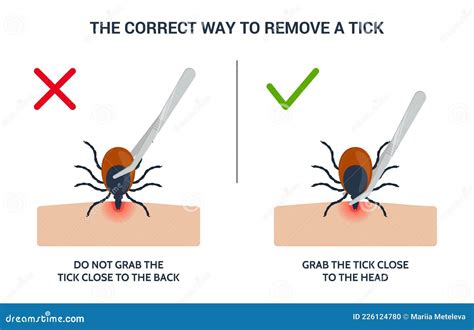How to Remove a Tick Safely and Effectively
Ticks are tiny arachnids that can transmit diseases like Lyme disease, making their removal crucial. Knowing the right technique is essential to prevent infection. This guide provides a step-by-step approach to safely remove a tick from your skin.
Understanding the Risks of Improper Tick Removal
Improper tick removal can increase the risk of transmitting diseases. Squeezing or crushing the tick can force infected saliva into your bloodstream. Similarly, leaving parts of the tick embedded in your skin can lead to infection. Therefore, following a safe and efficient method is paramount.
Essential Tools for Tick Removal
Before you begin, gather these simple yet essential tools:
- Tweezers: Fine-tipped tweezers are ideal for grasping the tick firmly close to the skin's surface. Avoid using your bare hands.
- Alcohol wipes or antiseptic: These are necessary for cleaning the area before and after tick removal.
- Container: A sealed container (like a zip-top bag) is useful for safely disposing of the tick.
Step-by-Step Guide to Tick Removal
Follow these steps meticulously to ensure safe and complete tick removal:
1. Preparation
Cleanse the area around the tick with an alcohol wipe. This helps sterilize the area and minimizes the risk of infection.
2. Grasping the Tick
Using the tweezers, grasp the tick as close to the skin's surface as possible. Avoid squeezing or crushing the tick's body.
3. Steady Removal
Pull the tick straight upward with steady, even pressure. Avoid twisting or jerking, as this could break off the tick's mouthparts.
4. Post-Removal Care
Once the tick is removed, carefully place it in the sealed container for disposal. Clean the bite area thoroughly with an antiseptic wipe or soap and water.
5. Monitoring for Symptoms
After tick removal, closely monitor the bite area for any signs of infection, such as redness, swelling, or pain. Watch for flu-like symptoms like fever, headache, or fatigue, and consult a doctor if these develop.
What NOT to Do When Removing a Tick
- Don't use petroleum jelly, nail polish remover, or other home remedies. These methods are ineffective and can actually prolong the attachment time.
- Don't squeeze or crush the tick. This increases the risk of disease transmission.
- Don't burn the tick off your skin. This is dangerous and can cause skin burns.
When to Seek Medical Attention
Consult a doctor if:
- You are unable to remove the entire tick.
- You experience symptoms consistent with tick-borne illnesses (Lyme disease, Rocky Mountain spotted fever, etc.).
- The bite area becomes severely infected.
By following these steps, you can safely remove a tick and minimize the risk of complications. Remember, prevention is key. Take precautions when spending time outdoors in areas where ticks are prevalent. Wear long sleeves and pants, use insect repellent, and check yourself and your pets for ticks after being outdoors.
